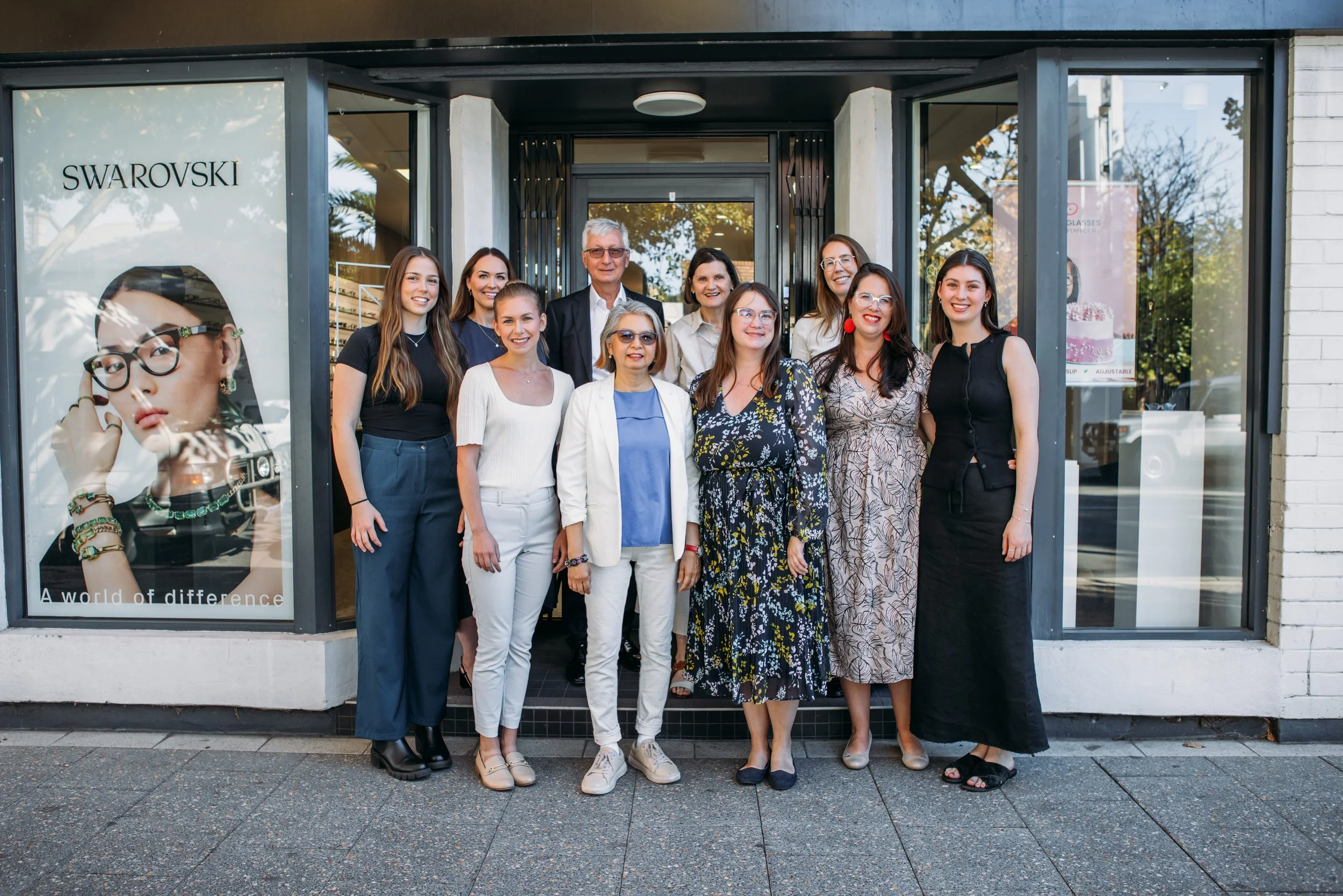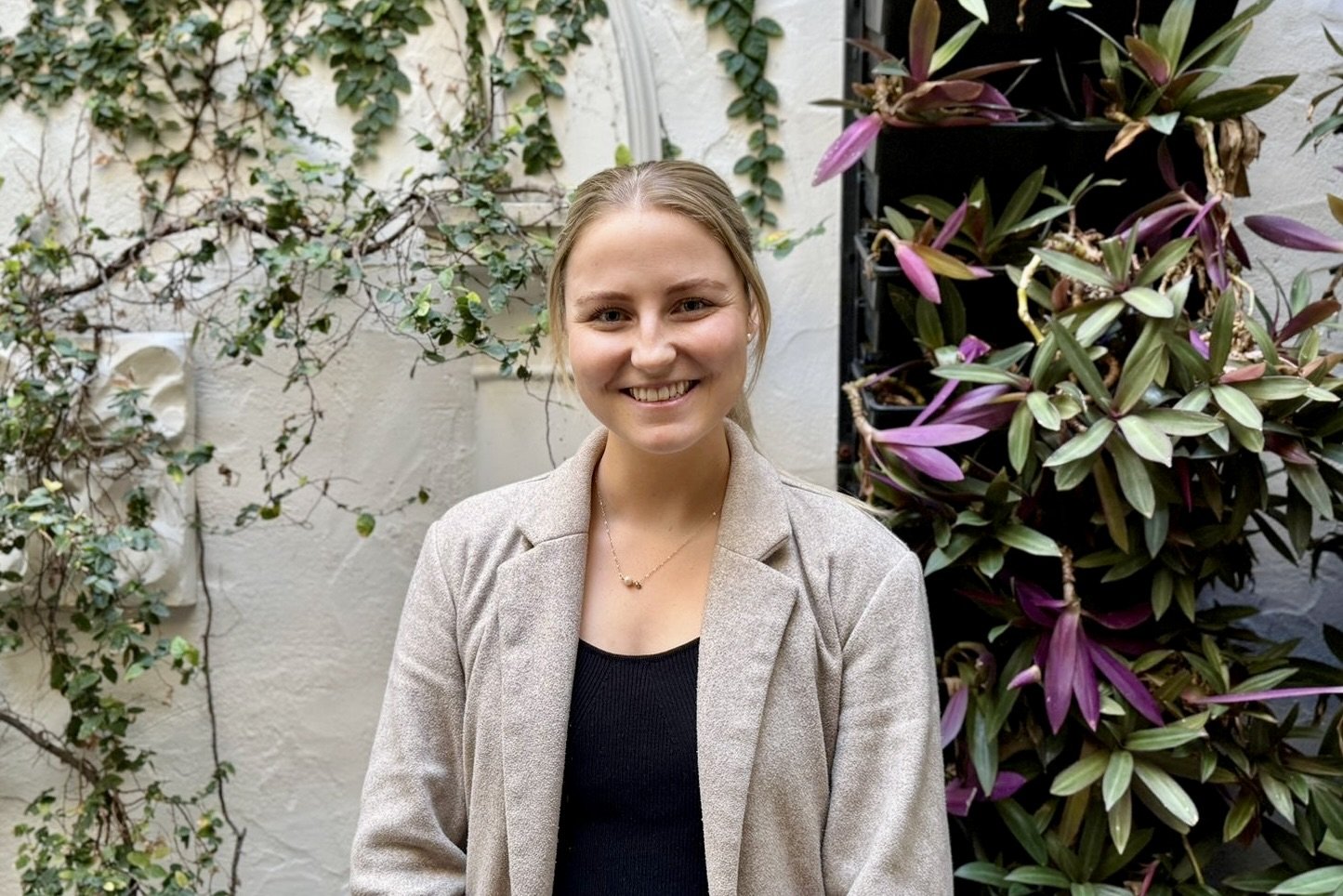
Squint Treatment Perth & Fremantle
Improve eye alignment with tailored care options
Providing Expert Squint Treatment for Better Eye Alignment
For Eyes Optometrists provides service for diagnosing and treating squint (strabismus) for patients in Perth and Fremantle. Our experienced team, including an in-clinic Orthoptist, work closely to provide tailored treatment options that help improve eye alignment and overall vision. Our goal is always to achieve the best possible outcome for you.
We provide a range of treatments for squint, including glasses, vision therapy, and surgical referrals when necessary. Our practice features a fully equipped vision therapy room, and our services are delivered by skilled professionals dedicated to improving your visual health and quality of life.
What is Squint?
A squint or strabismus is where the eyes do not align correctly and point in different directions. The medical term for a squint is strabismus. It is more commonly associated with young children but can happen at any age. One of the eyes may turn in (convergent), out (divergent), up or down (vertical) while the other eye looks ahead.
In an adult, a squint, or strabismus, is typically caused by circulation or neurological problems affecting the eye muscles or the nerves that control them. Damage to different cranial nerves can cause strabismus and double vision.
Symptoms and Causes for Squint
In infants and young children, strabismus usually appears by the time a child is three years old. It is usual for a newborn to have crossed or eyes that wander. By three to four months, your baby's eyes should be able to focus on small objects. Their eyes should also be straight and well-aligned. By six months old, a baby is developing the ability to focus on objects near and far away.
If a child develops strabismus before the age of three, it is unlikely that they will have any symptoms or report double vision. However, if a turned eye suddenly appears in an older child or adult, particularly if there are symptoms of double vision, you should seek the advice of an optometrist or healthcare provider right away.
The most common cause of strabismus in children is a problem with the neuromuscular control of eye movement, or refractive error. Less commonly, there may be a problem with the actual eye muscle. Family history also plays a role, and strabismus is more common in children whose family members have a similar problem.
Risk Factors
Several conditions are risk factors for misaligned eyes:
Uncorrected refractive errors.
Poor vision in one.
Cerebral palsy.
Downs syndrome.
Hydrocephalus (a congenital disease resulting in a buildup of fluid in the brain).
Stroke (the leading cause of strabismus in adults).
Head injuries may damage the area of your brain responsible for controlling eye movements.
Hormone-related conditions (such as Diabetes, and Grave's disease affecting the thyroid gland)
Brain tumours.
Other neurological/neurodegenerative conditions (including Multiple Sclerosis and Parkinsons disease).
Congenital developmental disorders and anomalies (in children, Browns syndrome and Duane’s syndrome)
How is Strabismus Treated?
Depending on the cause of the strabismus and the patient's age, there are several treatment options for strabismus. Our optometrists will discuss the options appropriate for your specific situation.
Treatment options include the following:
Non-Surgical Treatments
-
If you have uncorrected refractive errors, corrective lenses may help your eyes remain straight, improve vision, and reduce accommodative demand (the effort required to keep things in focus).
-
In adult cases, where double vision has been noted, a prismatic correction may be used. A prism is a special lens that can bend light in a particular direction to relieve double vision.
-
This may be appropriate for specific types of strabismus, especially intermittent squints like convergence insufficiency (a decreased ability to converge the eyes and maintain comfortable near vision) and those that are gradually decompensating.
-
It may be used to treat amblyopia, which occurs simultaneously with strabismus. The subsequent improvement in vision may also improve eye misalignment or strabismus control.
Surgical Treatments
-
Surgery to alter the length or position of eye muscles to correct the alignment of the eyes. An ophthalmologist mostly performs this procedure on children under two years old to restore binocular function, or older children for improved cosmetic appearance where the eyes appear straighter. In some cases, adults are also offered strabismus surgery, either to restore binocular function in cases of acquired strabismus, or for cosmesis.
Why choose us?
We are unique in having an in-clinic Orthoptist who works closely with our optometrists. We have collaboratively developed a vision therapy exercise that can be tailored to an individual patient with specific goals and targeted outcomes.
We have a fully equipped vision therapy room, and the vision therapy will be conducted by either our Orthoptist, Olivia Tomlinson or Nicole Hartman, our Practice Manager, who is also an Optometrist registered in South Africa.
Meet the Team
Squint FAQs
-
Squints can be partly or fully corrected by a variety of treatment options, either conservative (orthoptic exercises or prism correction) or non-conservative methods (surgery).
For squints that have an aetiology of refractive error, spectacles or contact lenses can be used to fully or partly correct the squint. In cases where there is full correction of the squint, it means that both alignment and eye teaming (binocularity) is restored. In some cases, spectacles or contact lenses may only offer correction of the refractive error, with little or no improvement in alignment or binocularity. Children with squints linked to refractive error typically require full-time, permanent wearing of spectacles. This is also important to prevent amblyopia and elicit optimal vision.
For children who develop a squint in early infancy, surgical correction is most often used to improve eye alignment. Beyond two years old, surgical intervention is about realignment of the eyes, as opposed to restoring binocular vision. In cases of intermittent squints, where binocularity does or has previously existed, conservative methods of management alone may be sufficient for successful treatment. This is often governed by the size of the squint.
Amongst adults, squints may be longstanding or acquired. In acquired cases, conservative management is used to manage double vision and improve comfort. Sometimes symptoms may spontaneously resolve. In cases where there is no resolution, prisms may be added to spectacles, or surgery performed to correct double vision and improve alignment of the eyes.
The success of any treatment for squint management depends on its size and onset. Smaller, acquired squints typically respond well to conservative management to restore binocularity and improve alignment, whereas larger acquired squints may require surgical intervention. For smaller longstanding squints, conservative management is only applicable where there is binocular potential and this depends on the individual, and larger longstanding squints require surgical intervention for realignment.
-
Squints can be corrected at any age. When considering binocular function, the best chances of achieving this is before the age of two years old. Beyond this age, correction is achievable amongst infants and children but the outcome is dependent on each individual case. Children often require glasses to restore alignment and binocularity, as well as to prevent amblyopia. Adults can also have squints corrected, and this is either through conservative or surgical treatment.
-
Strabismus is not something that children grow out of and can get worse without treatment. An uncorrected squint can also lead to other vision problems, such as a lazy eye (amblyopia). Other factors, such as stress, illness, and poor health can lead to decompensation of an intermittent squints, causing a double vision which requires intervention, either conservatively or with surgery.
-
No. At For Eyes, we are a private billing practice. This allows us to prioritising your eye health and gives us the ability to invest in advanced technology, training and spend the right time to understand your concerns.






